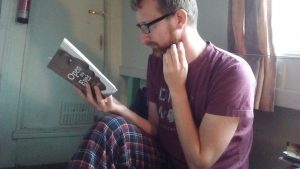Book Review: Open My Eyes, That I May See Marvellous Things, by Alice Allan
Alice Allan creates a real sense of the colours and dust and smells of Ethiopia, while telling the tale from multiple perspectives, so that each character’s story develops at its own pace. But this is not just a book about falling in love with a baby; we also have a mild thriller smouldering alongside Mariam’s story, although there is little for readers to figure out, and the rest of the book is so strong that this plot is not really crucial.
The biggest strength of the book is the chapters written from the baby’s perspective. I have never read prose that so powerfully captures the sensations of a newborn. If you need a way to convey the baby’s limited, terrifying world, or the importance of skin to skin and comfort, Alice Allan does this with the most poignant and effective insight. I read three pages of this book to a group of colleagues, and the effect was breathtaking.
This is a many-threaded story, and the central thread is that tiny fragile human, buffeted by the needs and the limitations of the adults in her world. It’s really wonderful to read fiction so heartfelt, so accurate, and so moving.
I’m intrigued to chat with Alice Allan for a future edition of Sprogcast (coming out on 25th April 2017), discussing both this lovely novel and her own fascinating life story.
[Disclaimer: I was sent a free preview copy of Open My Eyes. You can buy one from Pinter & Martin here, and don’t forget the 10% discount you can get by using the code SPROGCAST at the checkout.]

